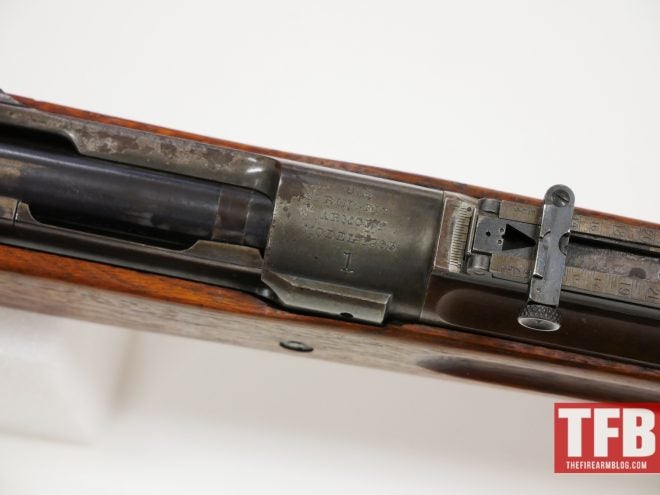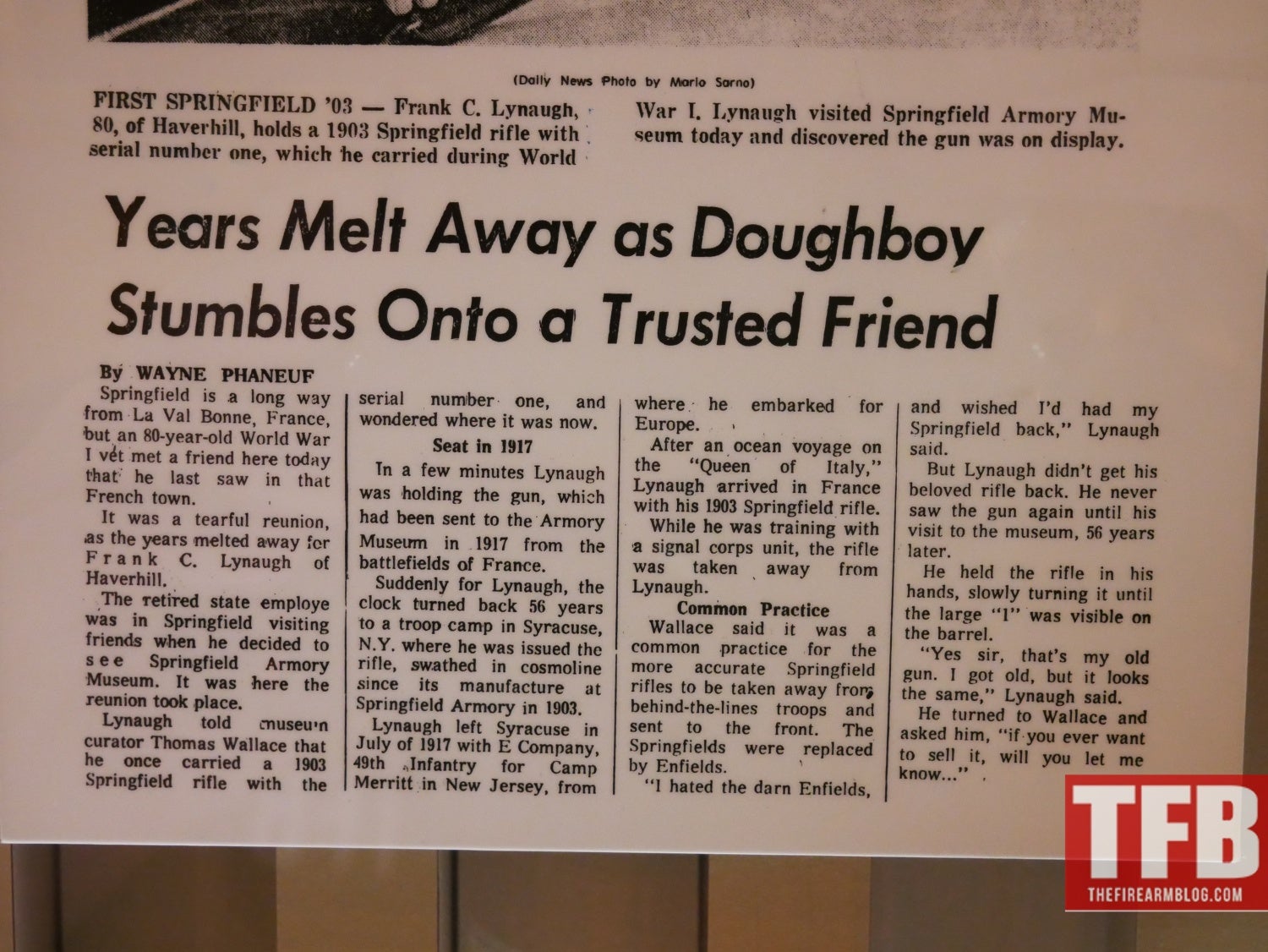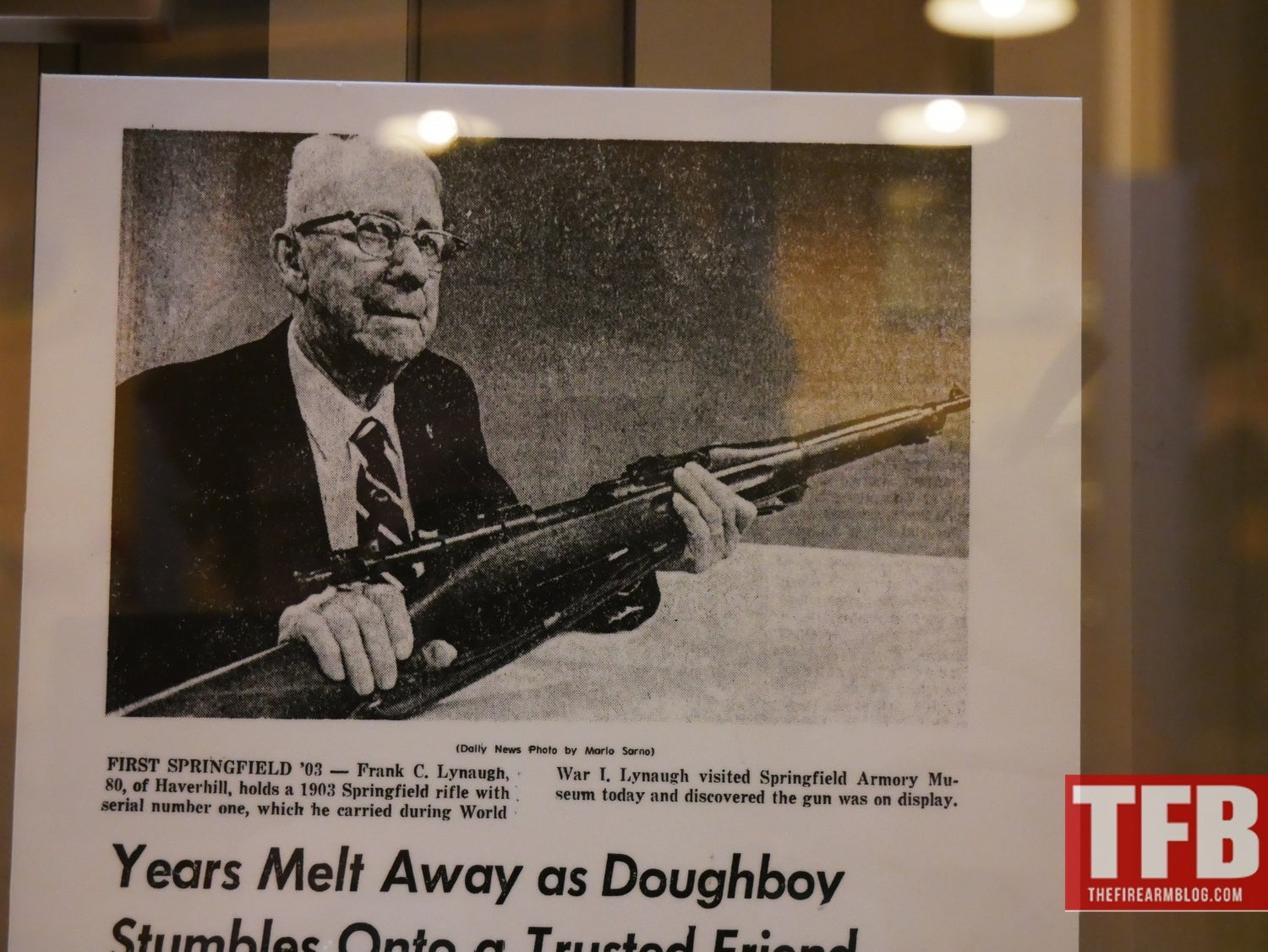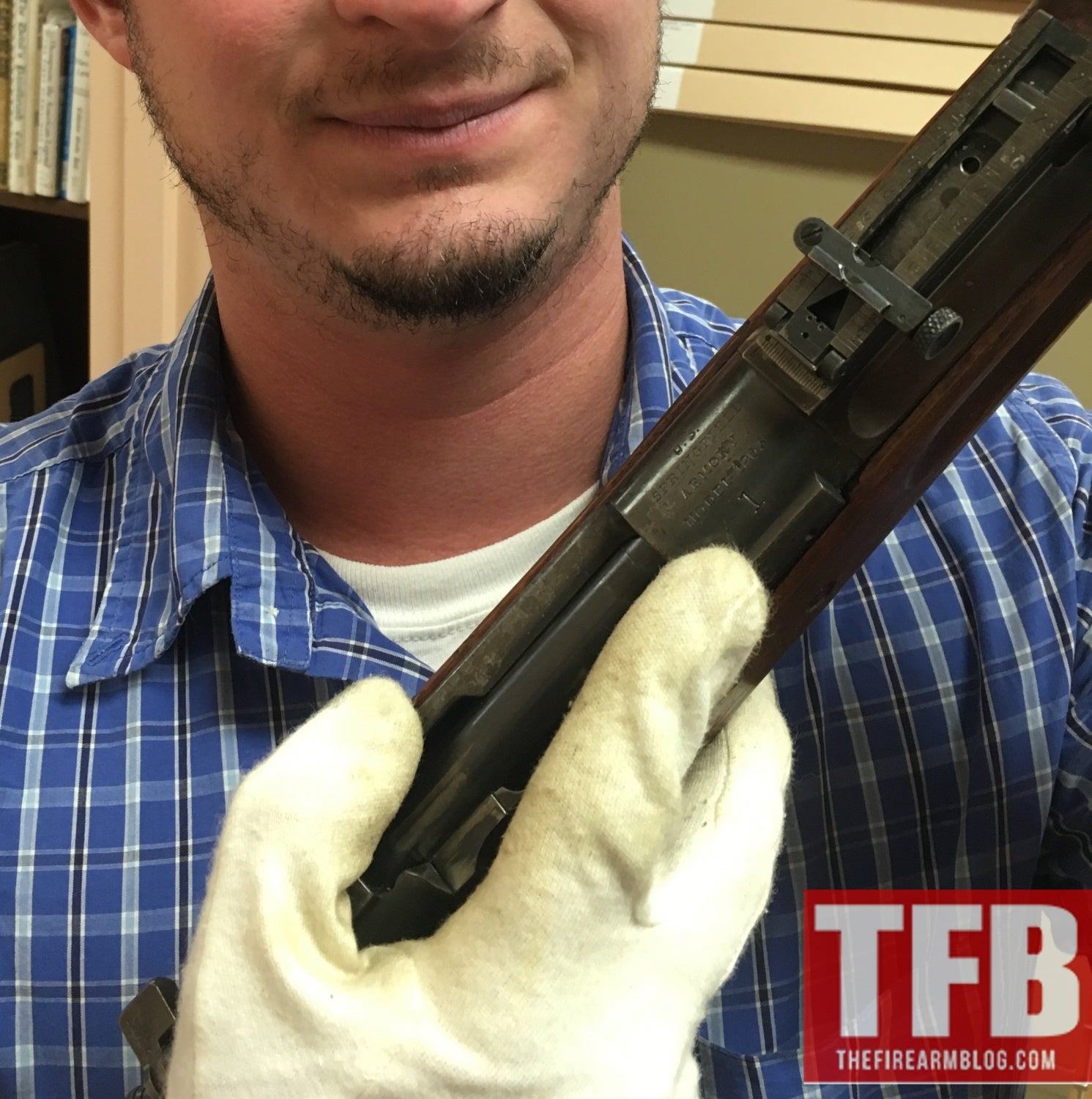Initial production runs of small arms are always objects of great interest and fascination. They represent the tangible beginning, the first of many, a historical landmark. Especially if they are of designs that go on to influence small arms history. Usually when they come off the line they are set aside by the factory, put in a presentation case and locked up for eternity in a reference collection. Subsequent landmark production serial numbers can also be just as historically important. Such as the Millionth M1 Garand to roll off the production line at Springfield Armory that was presented to John C. Garand as a testament to his service as a firearms designer.
What when it comes to Serial Number One of the M1903 rifle, there is a remarkable story behind it. Unlike usual practice where these initial rifles were stored and preserved, the very first production rifle of the M1903 line was actually treated like any other rifle coming off that same line. How this happened has been lost to history, possibly it was supposed to be set aside but the managers on the line forgot to make sure, or the workers never got the word. But either way, the rifle entered service with the U.S. Army. It was manufactured prior to the First World War in 1903 and chambered in .30-03, then converted to .30-06 around 1906 or 1907 and is obviously part of the “low count” of M1903 rifles that are potentially dangerous to fire (below 800,000 at Springfield Armory, and below285,506 coming out of Rock Island Arsenal). The reasoning behind this is because manufacturing technology at the time had workers “eyeballing” the heat treatment that was applied to the receivers and bolts of the rifles as they came out of the forges. This worked fine with the earlier .30-40 Krags because they were using black powder. But the pressures of smokeless powder was just too much to be left to “eyeballing” the components. Julian Hatcher was instrumental in establishing set measures that were put in place to stop this. But is a it true one of these will blow up in your face? Not entirely. Many of them will be perfectly fine to fire because the heat treatment was correct, but are you going to take that risk at the range?
Serial Number One eventually found its way being issued to E Company of the 49th Infantry Regiment, bound for Europe in 1917. A certain Frank C. Lynaugh was the recipient of the rifle, apparently still covered in cosmoline. When he got to France and was training to go to the front, the rifle was taken away and exchanged with an M1917 Enfield. Whether this was because some officer realized the importance of the rifle or just because they needed 1903s at the front isn’t known (apparently it was common to get the 1903s to the front), but what is known is that the rifle was returned to the Armory during the war, where it lies to this day on display.
We’ll be seeing more of Serial Number One on TFB in a future episode of TFB TV where we talk about it with Alex Mackenzie, senior curator at Springfield Armory National Historic Site.
 Your Privacy Choices
Your Privacy Choices



